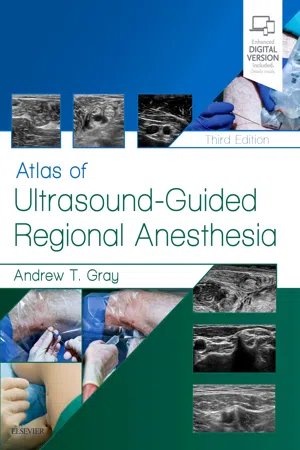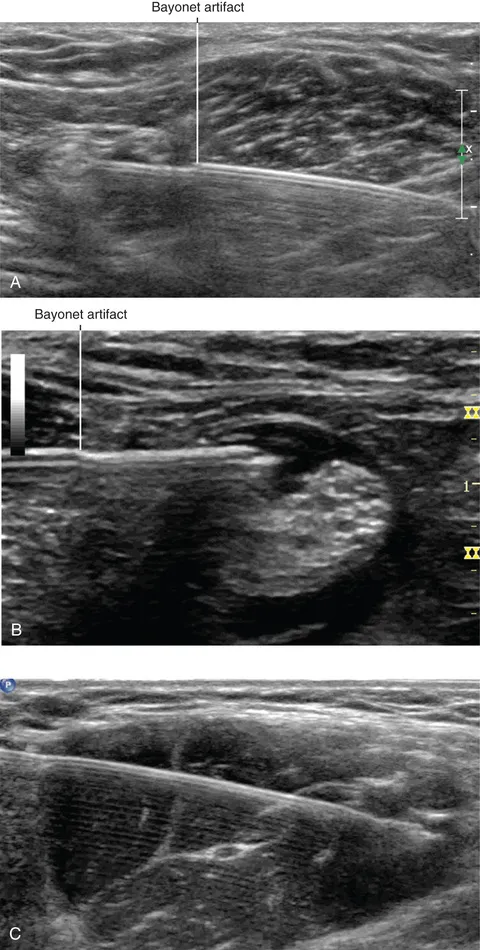
- 400 pages
- English
- ePUB (mobile friendly)
- Available on iOS & Android
Atlas of Ultrasound-Guided Regional Anesthesia E-Book
About this book
Step-by-step images, board-style review questions, and coverage of new blocks make this highly respected title a must-have reference for clinical practice. Written by Andrew T. Gray, MD, PhD, one of the pioneers of the use of ultrasound to guide needle placement, Atlas of Ultrasound-Guided Regional Anesthesia, 3rd Edition, shows you how to safely and effectively use the latest methods and applications of this technique.- Helps ensure correct needle placement with numerous 3-D and long-axis views that clearly depict surrounding structures.- Includes coverage of 11 new blocks: Adductor Canal, Posterior Femoral Cutaneous, Pectoral, Quadratus Lumborum, Pudendal, Paravertebral, Transversus thoracis, Supraorbital, Transtracheal, Greater Occipital and Lesser Occipital.- Features access to 20 author-narrated videos showing proper placement of needles using ultrasound guidance, including 11 new videos: Forearm (ulnar, median and radial), Ankle (tibial, saphenous, superficial peroneal, deep peroneal, sural), Paravertebral, Adductor Canal, and Catheters.- Presents several new chapters, including Regional Anesthesia in Resource-Constrained Environments and Safety of Ultrasound Guided Regional Blocks.- Expert Consult™ eBook version included with purchase. This enhanced eBook experience allows you to search all of the text, figures, and references from the book on a variety of devices.
Frequently asked questions
- Essential is ideal for learners and professionals who enjoy exploring a wide range of subjects. Access the Essential Library with 800,000+ trusted titles and best-sellers across business, personal growth, and the humanities. Includes unlimited reading time and Standard Read Aloud voice.
- Complete: Perfect for advanced learners and researchers needing full, unrestricted access. Unlock 1.4M+ books across hundreds of subjects, including academic and specialized titles. The Complete Plan also includes advanced features like Premium Read Aloud and Research Assistant.
Please note we cannot support devices running on iOS 13 and Android 7 or earlier. Learn more about using the app.
Information
Ultrasound
Speed of Sound


Attenuation
Table of contents
- Cover image
- Title Page
- Table of Contents
- Copyright
- Dedication
- Preface
- Contributors
- Video Contents
- Section 1 Introduction to Ultrasound Imaging
- Section 2 Structures
- Section 3 Upper Extremity Blocks
- Section 4 Lower Extremity Blocks
- Section 5 Trunk Blocks
- Section 6 Head and Neck Blocks
- Section 7 Safety Issues
- Appendix 1
- Appendix 2
- Appendix 3
- Appendix 4
- Index